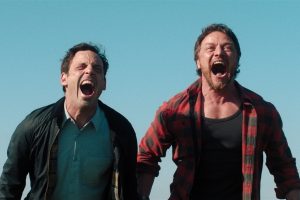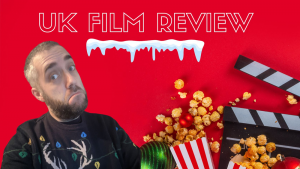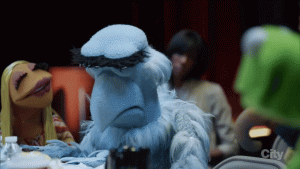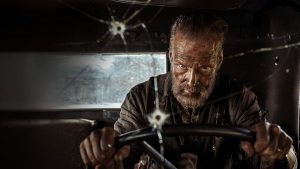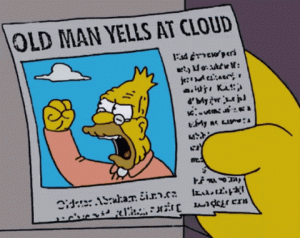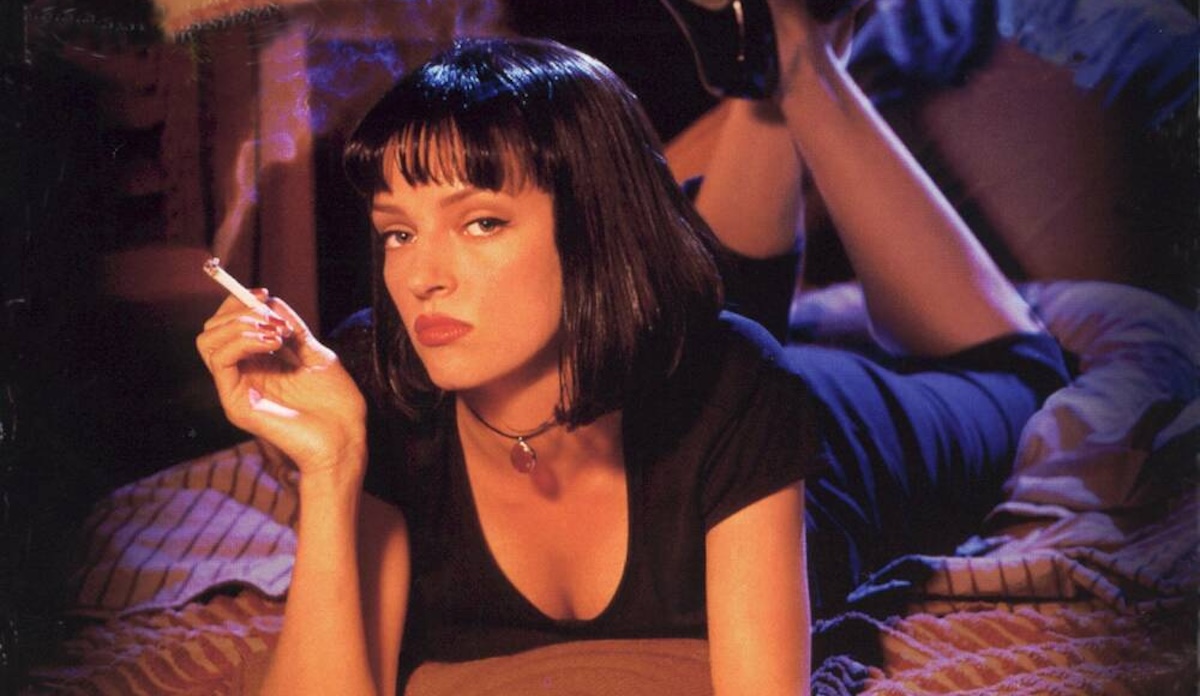
Quentin Tarantino‘s 1994 sophomore feature Pulp Fiction wasn’t just a major break out hit. It changed the face of cinema in the 1990s, both by helping bring attention to indie and foreign films, and by inspiring a host imitators. When audiences lined up to watch Tarantino’s bloody, whip-smart movie, studios rushed to fill theaters and video stores with more stories about loquacious hitmen, monologuing bank robbers, and foul-mouthed gun molls.
In most cases, these knockoffs provided cheap thrills, heavy on the violence and pop-cultural references but low on Tarantino’s sense of composition and ear for unique dialogue. In the best cases, Pulp Fiction‘s success made way for other great movies to get made, oddball films ignored by the studios until Tarantino convinced them that they could make money.
Here are the fifteen best Pulp Fiction influenced movies of the 1990s, those that stand on their own and those that deserve to break free of Tarantino’s shadow.
15. The Boondocks Saints (1999)
Make no mistake, Tarantino thinks the killers in his movies are cool. But he also manages to make them feel like full people with foibles and shortcomings and mistakes. The Boondocks Saints director Troy Duffy cannot fathom such limitations on his heroes, twin brothers Connor and Murphy MacManus (Sean Patrick Flanery and Norman Reedus). His camera worships the duo, giving them hero shot after hero shot as they gun their way through Boston.
Duffy’s cinema of excess makes for a sometimes thrilling watch, which accounts for The Boondocks Saints‘ cult status. That’s doubly true of the scenes involving Willem Dafoe‘s FBI agent Paul Smecker, a character who somehow pushes the movie’s threadbare concessions toward good taste out the window. The Boondocks Saints gets exhausting long before it reaches the end of its 108-minute runtime. The movie would be so much stronger with an occasional breather, if only Duffy could stop praising his baddies long enough to take a break.
14. Flypaper (1998)
“Slippery characters on the loose, in one sticky situation.” So says the voiceover in the trailer for Flypaper, a tiny indie crime film from writer/director Klaus Hoch, in his sole filmmaking project. Cheesy as the line might be, it’s an apt description of a movie that deals with mistaken identities and embarrassing situations, centered around dim-witted crooks Bobby Ray (Craig Sheffer) and Leon (Sal Lopez).
Flypaper has more than its share of the shocking dialogue and sudden violence common in its era of filmmaking, including a surprising amount of conversation about sex with farm animals. It also has its more sitcom plot lines, namely a spat between engaged couple Joe (John C. McGinley) and Laura (Illeana Douglas). The sitcom stuff, which also features Bram Stoker’s Dracula‘s Sadie Frost, works much better than the cool crime stuff, thanks in part to the skills of the cast in those scenes. The cool crime stuff, not so much, due to the forced dialogue, dull performances, and general unpleasantness.
13. The Way of the Gun (2000)
These days, Christopher McQuarrie is known as a vessel for Tom Cruise’s auteurist intentions, having helmed Jack Reacher and the last three (and next) Mission: Impossible movies. After working on The Usual Suspects with Bryan Singer (a movie just a bit too early for this list), McQuarrie directed his own script for The Way of the Gun, starring the always watchable Benicio del Toro and the never watchable Ryan Phillippe.
McQuarrie starts the movie with some Tarantino-esque dialogue and shocking violence, which goes heavy on the misogyny. From there, the film only gets more unpleasant, even as the dialogue stops trying to be witty and goes for heavy. In the end, The Way of the Gun feels like a dirty slog, the exact opposite of the movies McQuarrie went on to make later in life.
12. 8 Heads in a Duffle Bag (1997)
8 Heads in a Duffle Bag understands the most important quality a 1990s crime movie needs in order to stand out from the crowd: a memorable title. 8 Heads in a Duffle Bag also benefits from a clever plot in which lowlife Tommy Spinelli (Joe Pesci) gets hired to transport, you guessed it, eight heads in a duffle bag across country to prove a successful contract killing. The duffle bag gets switched at the airport, forcing Tommy to follow the friendly American with his heads, played b Andy Comeau.
Unfortunately, writer/director Tom Schulman has no idea what to do with that premise. Instead of just accepting that he had a crazy enough idea, Schulman overdoes the humor and wackiness. Comeau and Kristy Swanson, who plays the American’s nervous wife, go too broad with the material. And then David Spade shows up. The key aspect to a good Tarantino knockoff is being cool, and 8 Heads in a Duffle Bag is anything but that.
11. Suicide Kings (1997)
Christopher Walken has always been a great actor, a man who knew how to use his unique features and delivery to make even the most banal character feel unique. But in the 1990s, he got typecast as sinister villains thanks to strong performances in True Romance, The King of New York, and, yes, A View to a Kill. Post True Romance (and also Pulp Fiction, come to think of it) casting Walken became an easy way to signify hip and gain entry to the cool film school kids’ table.
Suicide Kings proves the limitations of such thinking. Directed by Peter O’Fallon, Suicide Kings follows a group of twentysomethings who kidnap a gangster (Walken) in hopes of extorting some cash and fame. O’Fallon tries to borrow a bit of Swingers energy for his Tarantino knockoff, filling the movie with unlikable, self-pleased jerks played by Henry Thomas and Johnny Galecki. None of it works, but Walken is still fun to watch, even if he’s carrying the entire show on his back.
10. Freeway (1996)
The opening credits of Freeway feature illustrations of a wolf chasing sexy ladies in various states of undress. And in those moments, viewers realize that they’re watching n edgy take on Little Red Riding Hood. No one asked for an edgy take on Little Red Riding Hood, not even in 1996. Somehow though Freeway manages to overcome that ill-advised concept, thanks to a strong cast.
Written and directed by Matthew Bright, the man who would gift the world the Oscar bait awfulness that is Tip Toes, Freeway stars Reese Witherspoon as an illiterate teen who becomes a target for serial killer (Kiefer Sutherland). Bright turns in a truly hateful script, which sometimes more anticipates Rob Zombie than it does rip off Tarantino with its extended scenes of white trash arguing. But Witherspoon and Sutherland elevate the awful material, as do co-stars Amanda Plummer, Bokeem Woodbine, and others, at least to the level of watchable. I cannot yet speak to the quality of the sequel Freeway II: Confessions of a Trick Baby.
9. Truth or Consequences, N.M (1997)
Truth or Consequences, N.M. doesn’t begin like a Tarantino style film. Kiefer Sutherland, in his directoral debut, opens the film with sequences of Raymond Lembecke (Vincent Gallo) leaving prison to meet up with his lady love Addy (Kim Dickens), all set to earnest folk music. But rest assured, the movie does explode into moments of hyper-violence whenever Lembecke reunites with his volatile best pal Curtis (Sutherland).
Sutherland tries to find a balance between the over-the-top mayhem and the love between its central characters. As a consequence, the movie works in installments. Dickens remains as marvelous as ever, even in a somewhat thankless role, and Gallo has a certain charm, at least when viewers forget about his personal life. But the two tones never synthesize in the same way that Wild at Heart or True Romance work, resulting in an uneven and sometimes clanging work.
8. Things to Do in Denver When You’re Dead (1995)
“It’s buckwheats,” Jimmy the Saint (Andy Garcia) tells his band of misfits in Things to Do in Denver When You’re Dead, a group of hoods that includes Pieces Polymeros (Christopher Lloyd) and Easy Wind Denton (Bill Nunn). We viewers don’t know what buckwheats means, but the misfits all respond with horror and anger, a reaction that only makes us want to chuckle more. Finally, after we watch the misfits’ handwriting for a few minutes, voiceover from an elderly mobster (Jack Warden) describes what buckwheats means in great detail.
The buckwheats moment illustrates how badly writer Scott Rosenberg’s script yearns for a sense of cool. Director Gary Fleder, in his debut, matches the idiosyncratic dialogue with an almost Gothic visual sense. Jimmy the Saint has an intense stand-off with Christopher Walken’s wheelchair-bound villain The Man With The Plan (yes, that is how he’s credited) in front of a stained glass window while beams of light are diffused by the smoke surrounding them. The pair are also, of course, tlaking about buckwheats and misfits. Yet the mishmash somehow works, not because it reaches a level of cool or seriousness that the filmmakers intend, but because it feels like a parody of the post-Tarantino craze.
7. U-Turn (1997)
Given the fact that his career was over two decades old by the time U-Turn hit theaters, director Oliver Stone is more of an influence on Tarantino than a hip young filmmaker trying to ride on his coattails. But given that it has a lot more in common with Natural Born Killers, based on a story by Tarantino, than it does his other films of the era, U-Turn certainly fits among the post-Pulp Fiction group.
Based on the novel Stray Dogs by John Ridley, who also wrote the screenplay, U-Turn stars Sean Penn as a drifter who gets caught up in local crime and doublecrosses after his car breaks down in an Arizona town. Stone goes for a comically overheated version of neo-noir, with Jennifer Lopez as a femme fetale, Nick Nolte as her dangerous and older husband, and Joaquin Phoenix as a would-be killer who calls himself “T.N.T.” Is it good? No, not at all. But Stone pushes the material so far into ridiculousness that it entertains.
6. 2 Days in the Valley (1996)
2 Days in the Valley draws its inspiration less from Tarantino or even the ’70s crime movies that inspired Pulp Fiction and more from the noir films of the ’40s and ’50s. That distinction helps writer and director John Herzfeld dodge the “rip-off” tag, even if Pulp Fiction clearly helped the flick get produced. Instead of the hyperactive style that so many Tarantino followers employ, Herzfeld goes for mood, employing long shots to capture the characters’ malaise in the California heat. Furthermore, the ensemble cast has more in common with Short Cuts a few years earlier, or Magnolia a few years later.
All that said, 2 Days in the Valley could perhaps benefit from pulling more from Tarantino. Herzfeld’s gathered an impressive group of actors, including Danny Aiello, Jeff Daniels, Glenne Headly, Charlize Theron, and James Spader. These performers are always fun to watch, but their characters aren’t nearly as interesting as the performers playing them.
5. Lock, Stock, and Two Smoking Barrels (1998)
Guy Ritchie isn’t just borrowing from Tarantino. He’s also riffing on fellow Englishman Danny Boyle, whose debut Shallow Grave also released in 1994. In Lock, Stock, and Two Smoking Barrels, Ritchie digs into the British underworld, portraying baddies played by Jason Stratham and Vinnie Jones with oodles of slick style.
Lock, Stock, and Two Smoking Barrels a quartet of small-timers who go into debt with gangster Hatchet Harry (P. H. Moriarty) after playing in a rigged, high-stakes card game. To pay off the debt, the friends plan to rob the criminals operating in a nearby apartment, leading to all manner bloody shenanigans. Lock, Stock is a cut above most of the Tarantino copies, thanks to Ritchie’s over-the-top style and his gang of cockney crooks.
4. Love and a .45 (1994)
Given that it released just a few months after Pulp Fiction, Love and a .45 might not seem like a Tarantino knock off. But any benefit of the doubt falls away in a sequence in which hoodlum Dinosaur Bob (Jeffrey Combs), in his dark suit and skinny tie, orders his partner Creepy Cody (Jace Alexander) to turn up the rock music to torture rube Billy Mack Black (Rory Cochrane). Love and .45 writer and director C.M. Talkington didn’t see Pulp Fiction beforehand, but he sure did see Reservoir Dogs.
So why is Love and a .45 ranked so high? Well, look back at that description and notice the name of the actor playing Dinosaur Bob. Jeffrey Combs is so much fun as a Southern-fried baddie that he transcends any complaints about being a Tarantino cast-off and makes Reservoir Dogs look bad for not casting him. The actual leads Gil Bellows and Renée Zellweger don’t have the most interesting arc as star-crossed lovers caught in a life of crime, but Combs carries the movie on his back to make it a fun watch.
3. Go (1999)
With its ensemble cast, fractured narrative style, and crime story, Go fits among the others on this list. But where everything preceding Go on this list just uses a style similar to Tarantino, director Doug Liman and writer John August translate it, bringing the approach to a group of partying twentysomethings instead of the thieves and mobsters of Reservoir Dogs and Pulp Fiction.
Part of the distinction comes from Liman building on his previous film, the breakout Swingers. The quartet of young men on their way to Vegas would fit right alongside Vince Vaughn and Jon Favreau from that movie. However, Liman and August expand the model to include some compelling characters that one wouldn’t find in Swingers or in Tarantino’s early ouevre, including Sarah Polley as a supermarket clerk over her head, William Fichtner as a unsettlingly earnest detective, and Timothy Olyphant as the world’s most laid back scary drug dealer.
2. Get Shorty (1995)
One good side to the wealth of Tarantino rip-offs was increased attention for writer Elmore Leonard. In books such as Rum Punch and Out of Sight, Leonard set the standard for the smart, character-driven crime stories that Tarantino and others rightly love. That said, it wouldn’t be accurate to call Get Shorty a full Tarantino rip off, as it comes from director Barry Sonnenfeld, who already served as the cinematographer for the first few Coen Bros. movies and made the successful Addams Family films.
However, it’s hard to believe that Tarantino’s success didn’t help get a greenlight for Get Shorty, a Hollywood satire starring John Travolta as gangster Chili Palmer and Gene Hackman as movie producer Harry Zimm. Palmer follows Zimm to retrieve a gambling debt but when he finds out that the man is a movie producer, he can’t help but pitch his life story. The film that follows has lots of crime, violence, and wit. But Sonnenfield’s wiz-bang direction makes it stand out from others on this list.
1. Grosse Pointe Blank (1997)
In the opening of Grosse Pointe Blank, hitman Martin Blank (John Cusack), dressed in black, argues with his handler Marcella (Joan Cusack) about his existential crisis and his upcoming high school reunion while assassinating a target, all set to the ironic tones of “I Can See Clearly Now.” In other words, it sounds like the worst possible Pulp Fiction knockoff. But somehow, director George Armitage, working from a script by Tom Jankiewicz, as well as Cusack and his frequent collaborators D. V. DeVincentis and Steve Pink, craft a movie funny and moving and, believe it or not, real.
Blank gives Cusack his ideal role, a man who buries his insecurities behind a veneer of cool. When he returns to his Michigan hometown Grosse Pointe and faces the girlfriend (Minnie Driver) he abandoned a decade earlier, that exterior breaks. It also features Dan Aykroyd as a rival contract killer who wants the hitmen to unionize. At once thoughtful and funny and, yes, very cool, Grosse Pointe Blank is what the post-Pulp Fiction crime movie movement promised, but rarely achieved.
The post Let’s Rank the Quentin Tarantino Knockoffs of the ’90s appeared first on Den of Geek.
